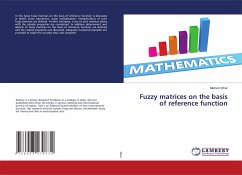High Quality Content by WIKIPEDIA articles! High Quality Content by WIKIPEDIA articles! In mathematics, an element x of a star-algebra is self-adjoint if x = x. A collection C of elements of a star-algebra is self-adjoint if it is closed under the involution operation. For example, if x = y then since y = x = x in a star-algebra, the set {x,y} is a self-adjoint set even though x and y need not be self-adjoint elements. In functional analysis, a linear operator A on a Hilbert space is called self-adjoint if it is equal to its own adjoint A . See self-adjoint operator for a detailed discussion. If the Hilbert space is finite-dimensional and an orthonormal basis has been chosen, then the operator A is self-adjoint if and only if the matrix describing A with respect to this basis is Hermitian, i.e. if it is equal to its own conjugate transpose. Hermitian matrices are also called self-adjoint.
Bitte wählen Sie Ihr Anliegen aus.
Rechnungen
Retourenschein anfordern
Bestellstatus
Storno








